Many visitors bypass the Sacred Valley of Peru on their way to fulfill that travel bucket list item of going to Machu Picchu. The town of Ollantaytambo (pronounced O-yan-tai-tam-bo), also called Ollanta (O-yan-ta) by locals, is charming town often used as the start of the train journey to Machu Picchu. We were lucky enough to spend a few nights in this charming town with so much history during our Peru trip and loved it.
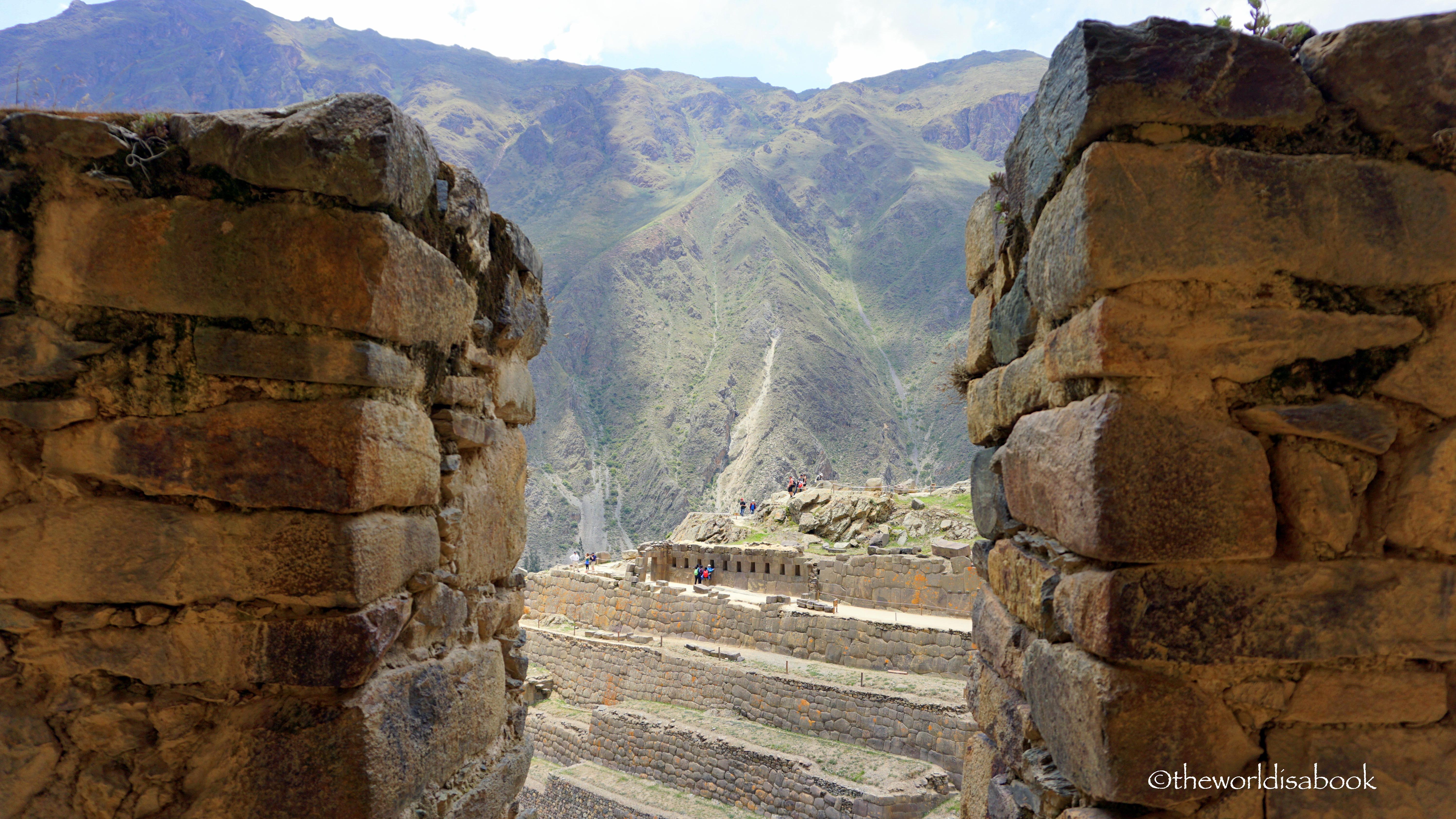
The main attraction of the town is the Ollantaytambo Fortress. This large 15th century Inca fortress is one of Peru’s best well-preserved ruins. This was our first glimpse of Temple Hill and the fortress from the town square. Our guide told us the hill was supposed to be in the shape of a llama. We couldn’t quite picture it from our vantage point.
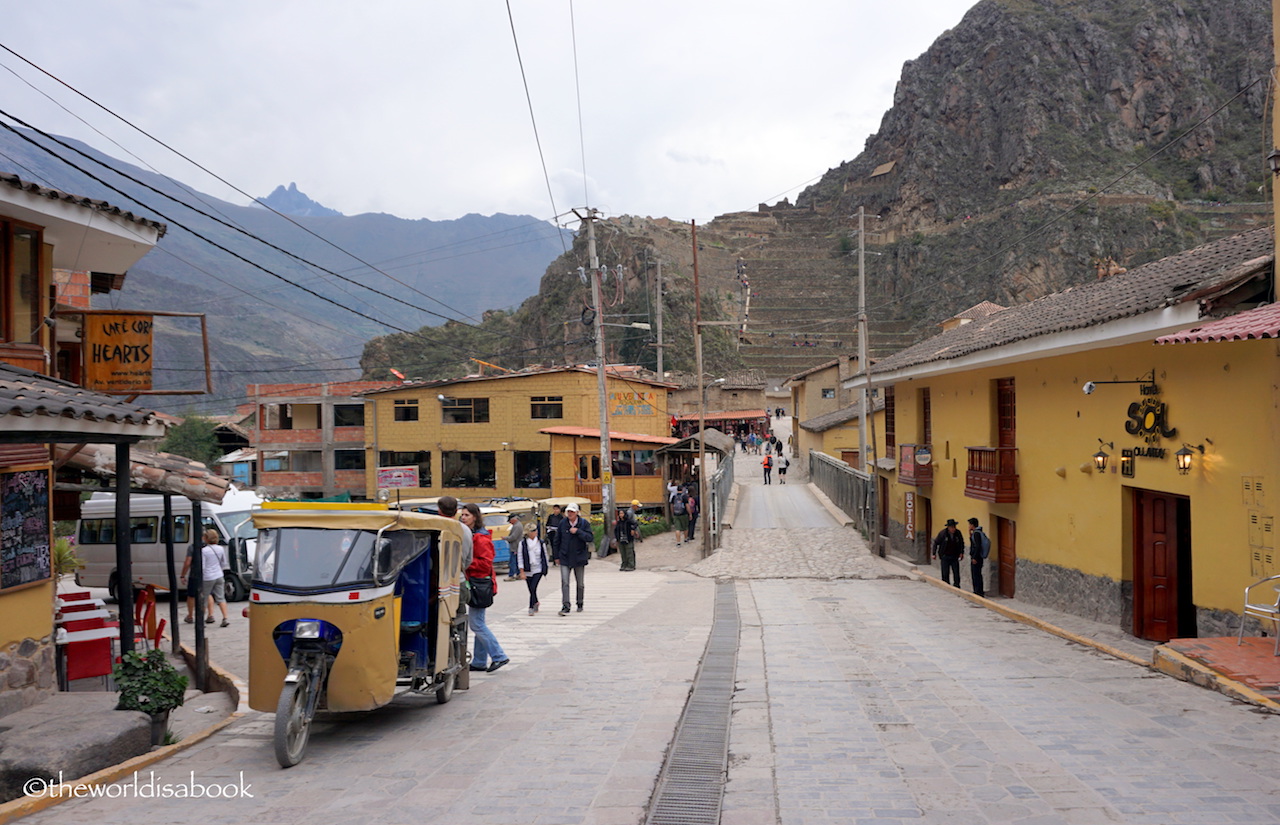
It was a short walk to the fortress from the center of town. But, it was even faster to get there when riding one of these tuktuks. We couldn’t pass it up. For about 1 sole or 30 cents (US), we had a great start to exploring the Inca fortress.
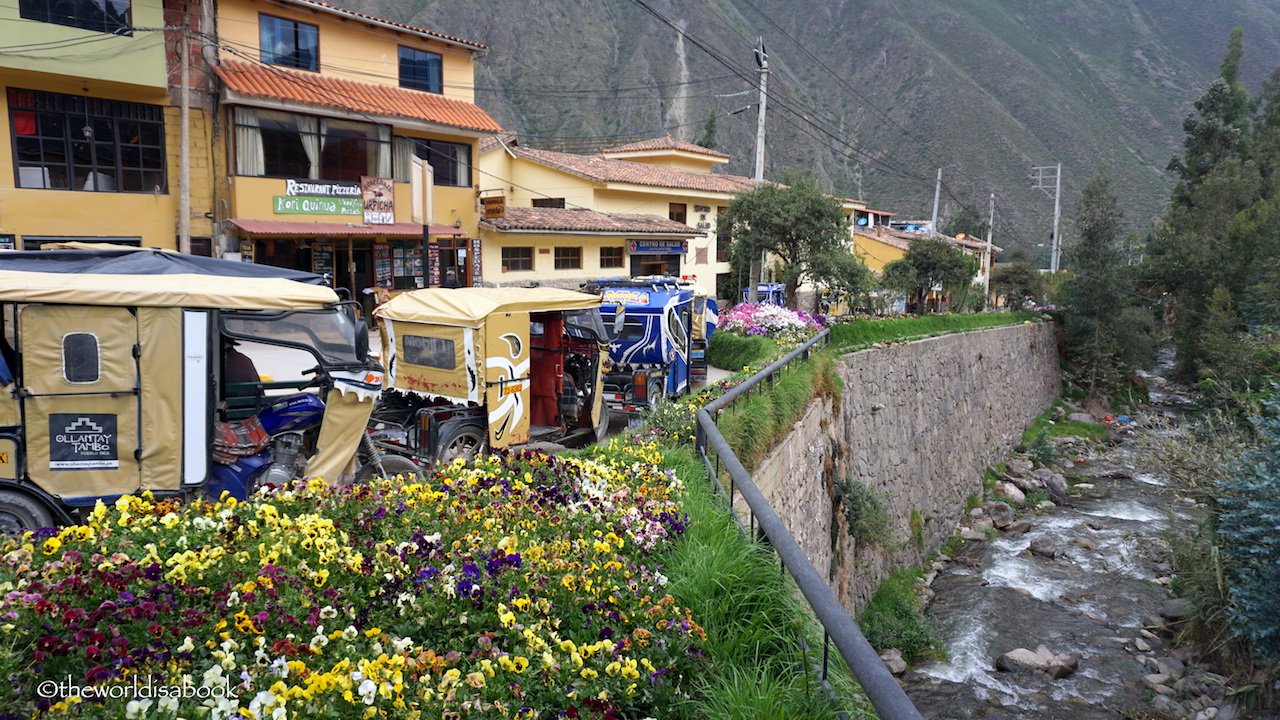
The Inca emperor, known as Pachacuti, conquered this part of the Sacred Valley region and decided to build agricultural terraces, an irrigation system, a ceremonial center and noble houses. It was a military, religious and political complex. It was named after Ollanta, an Incan warrior.
Spanish conquistadors invaded and conquered the Inca Empire and Peru and colonized the region for over 250 years years. The Incas lost 90% of their population, mostly from catching diseases from the foreigners, during the Spanish colonization.
Ollantaytambo became a military fortress in response to the Spaniards moving further with their conquest. The Incas successfully defeated the Spaniards in 1536. Unfortunately, the Spanish army led by Pizzaro returned with a much larger army and conquered Ollantaytambo in 1540.
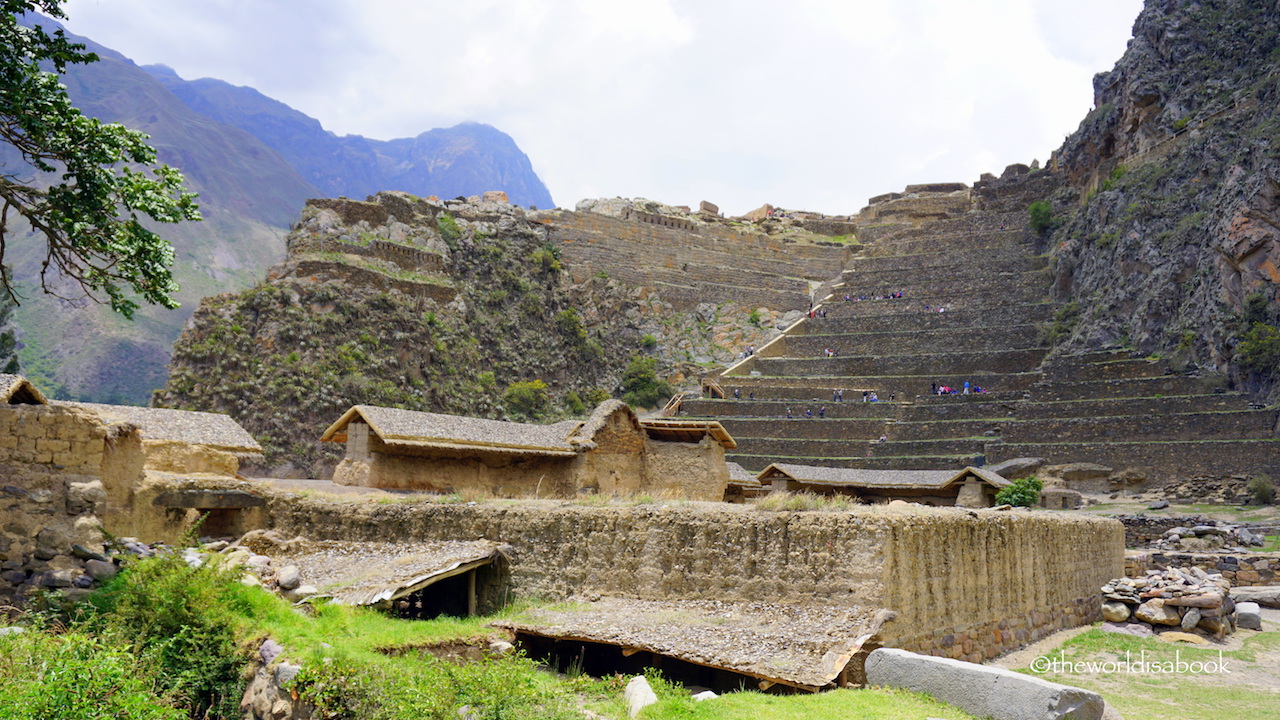
The complex has four areas that included the town, temple hill, ceremonial section and the agricultural area. It was about 600 hectares. The complex can be toured on your own after paying admission fees. But, there were also guides at the entrance who were readily available to be hired.
Our group of five decided to hire one since we didn’t know too much about this fortress. It really helped to have Edgar around. We learned that he lived in Cusco xx miles (70 km) away and rides one of the buses daily. His English was excellent and we learned a lot from him.
Looking up at the imposing temple hill was a bit overwhelming. It was our second day in Peru and we were still adjusting to the altitude. Ollantaytambo lies at 9,160 ft (2792 m). We started feeling light headed and were breathing hard as soon as we started climbing. Luckily, Edgar was so used to the tourists who could only handle a few steps at a time. We took several breaks as he told us the history of this area.

This was our view along one of our rest stops. It was the ceremonial sector along with the town from the fortress.
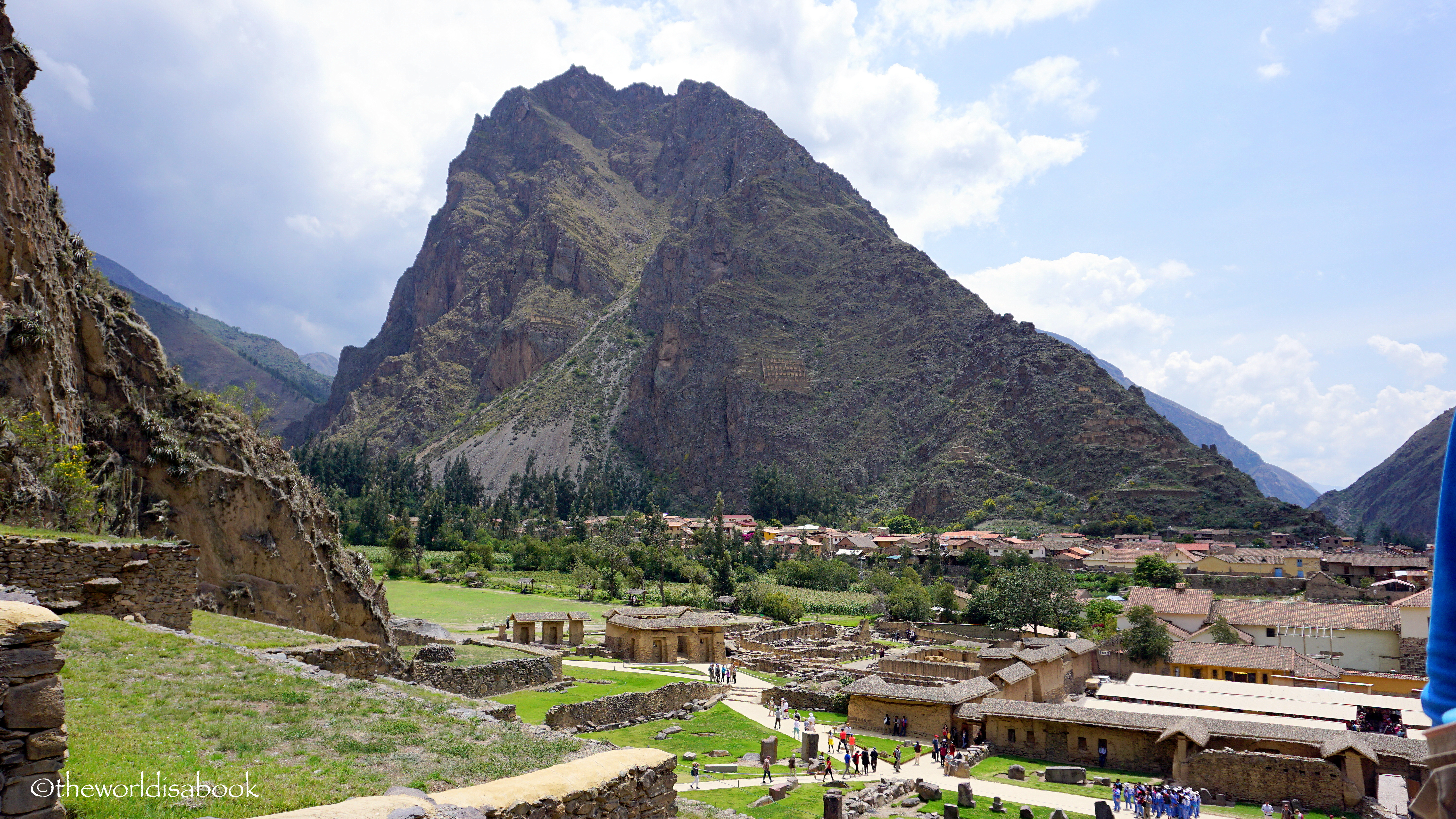
It was also worth admiring the structures across the way. We saw fieldstone storehouses or ‘Qollqa’ or colca on Pinkuylluna mountain to preserve their crops and store surpluses. It was amazing to think how the Incas accomplished building these structures on such a steep hill.
Our guide also pointed out the carved rock formation protruding to the left of the storehouses. This was supposed to be the face of Viracocha who created the Inca mythology. Can you see it?
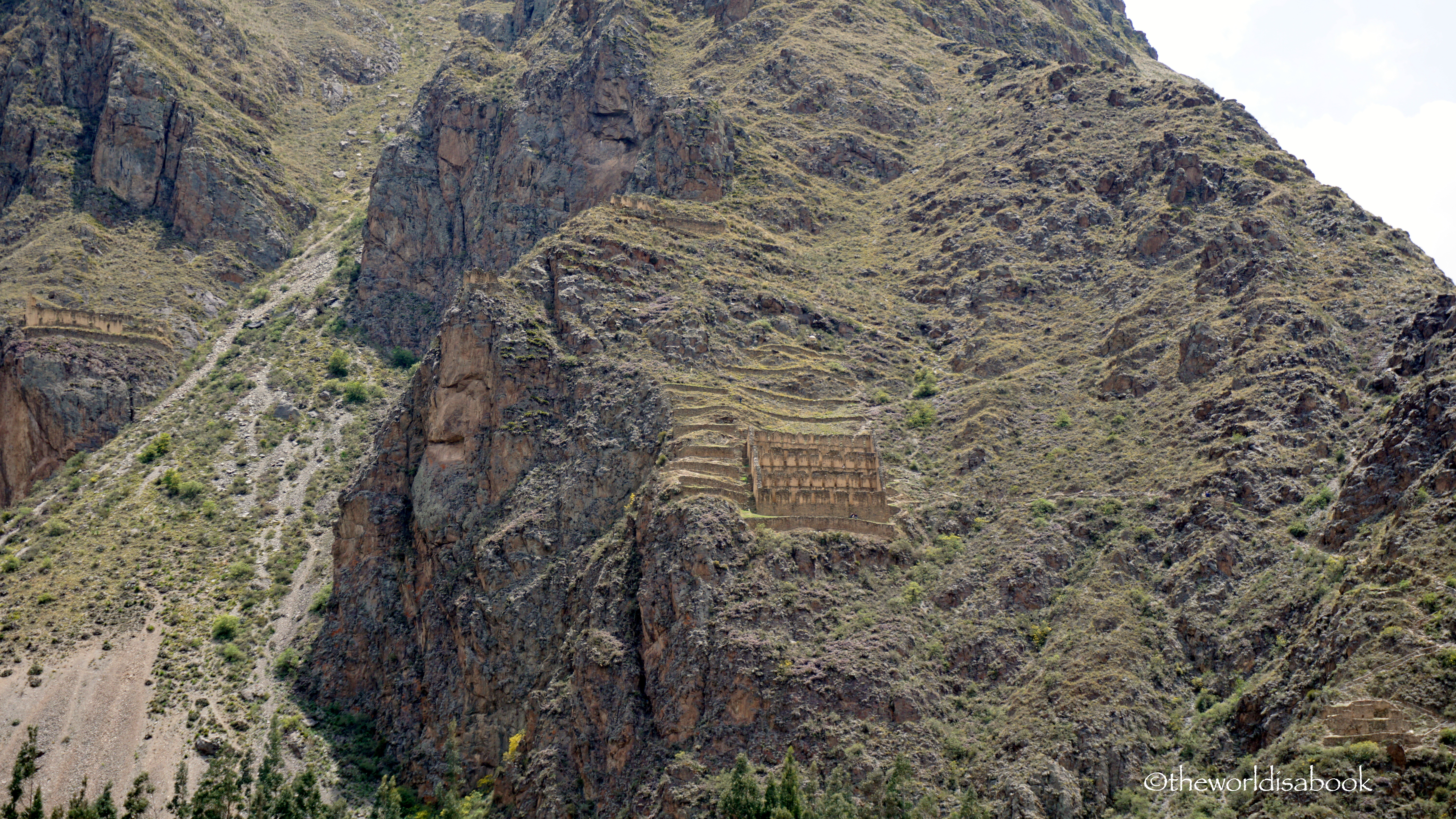
Some may argue erosion did this. But seeing what the Incas were capable of, it wouldn’t have been a surprise to know this was also their handiwork. During the summer solstice, the sunlight passes directly over eye of the carved face.
We climbed the 200 arduous steps to the top of the fortress. Most of Temple Hill was made up of agricultural terraces. These terraces were taller than all of us and were wide too.
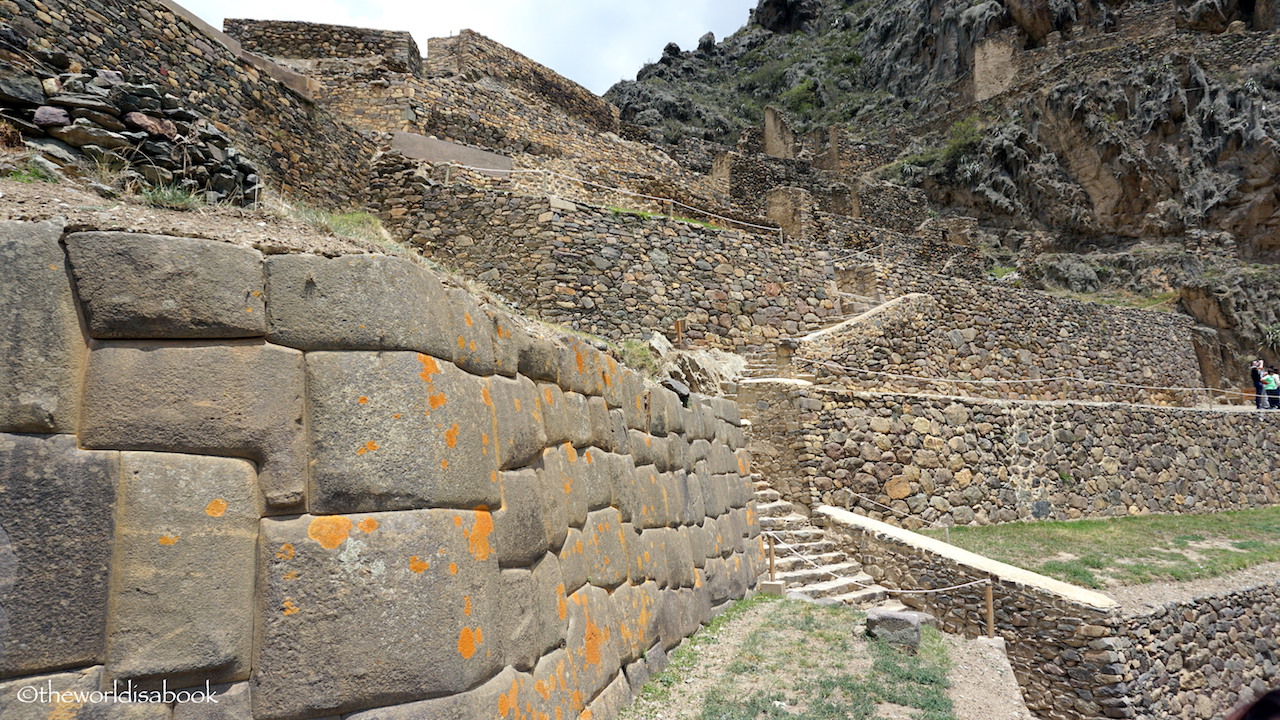
While the views were amazing, the construction of the walls and stonework was even more remarkable. Many of the stones were fitted and cut so intricately that they fit together like a puzzle and with no mortar in place. It was quite smooth too. This was a steep area to build too so it was interesting to try and figure out how this was built and the manpower that went into its construction.
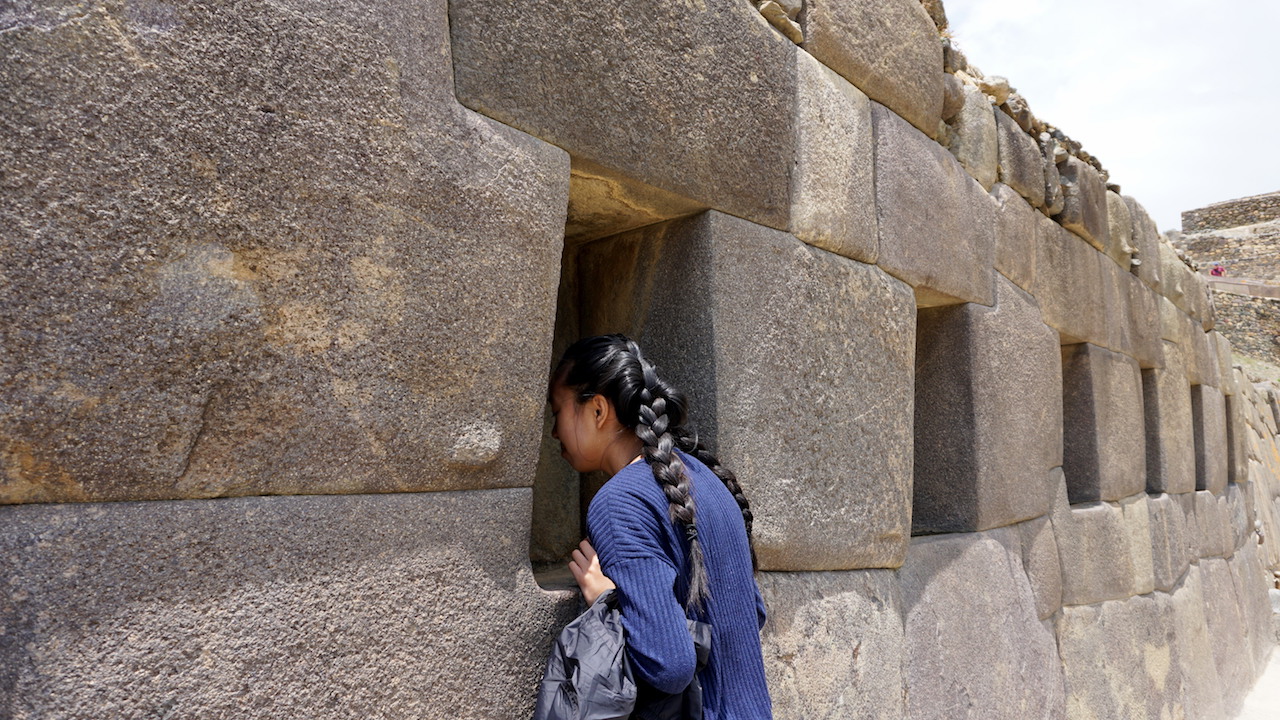
This was the view of the valley behind the ruins. The mountain on the left has part of the quarry where the large stones used to build the walls were mined.
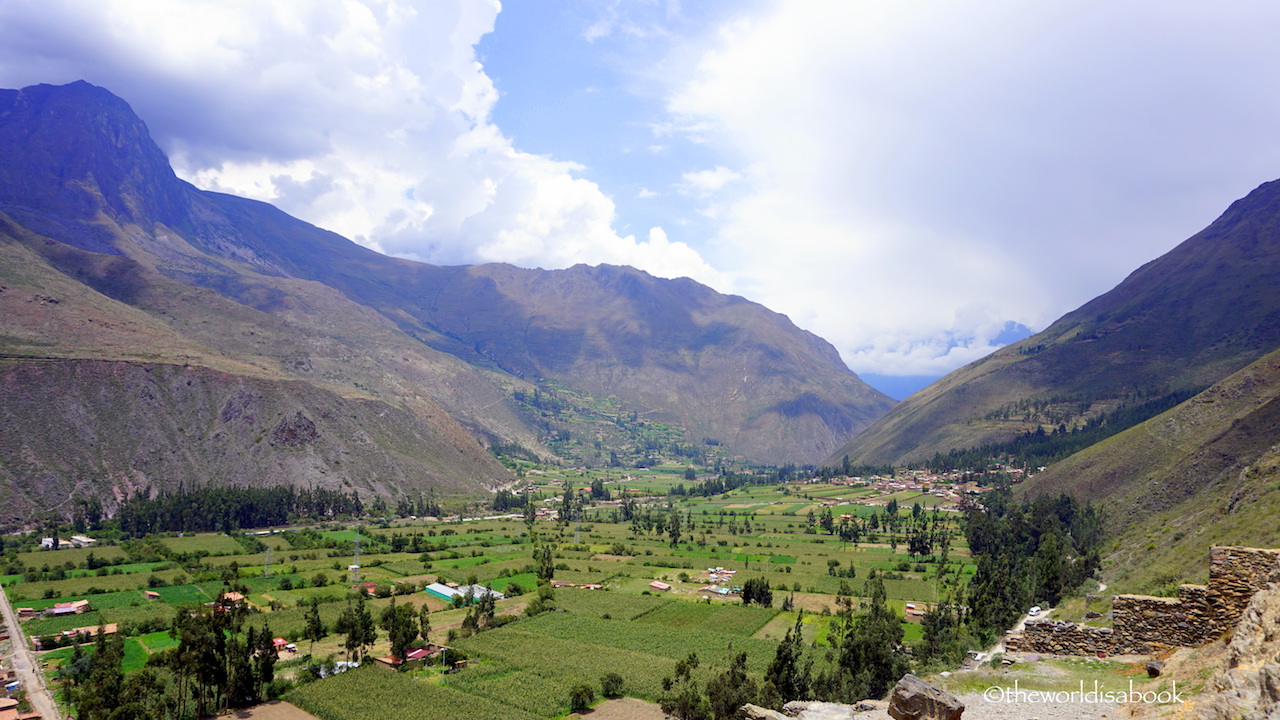
One of the major attractions at the top was the unfinished Temple of the Sun. It was believed to have been used to worship the sun and where they gathered during the solstices. It acted like a calendar for the Incas.
There was a large wall here made up of six monolith stones. Each stone was estimated to weigh over 50 tons. It was believed that the stones came from the quarry across the valley. It was incredible to imagine how the Incas transported these giant stones from one mountain to another without modern technology.
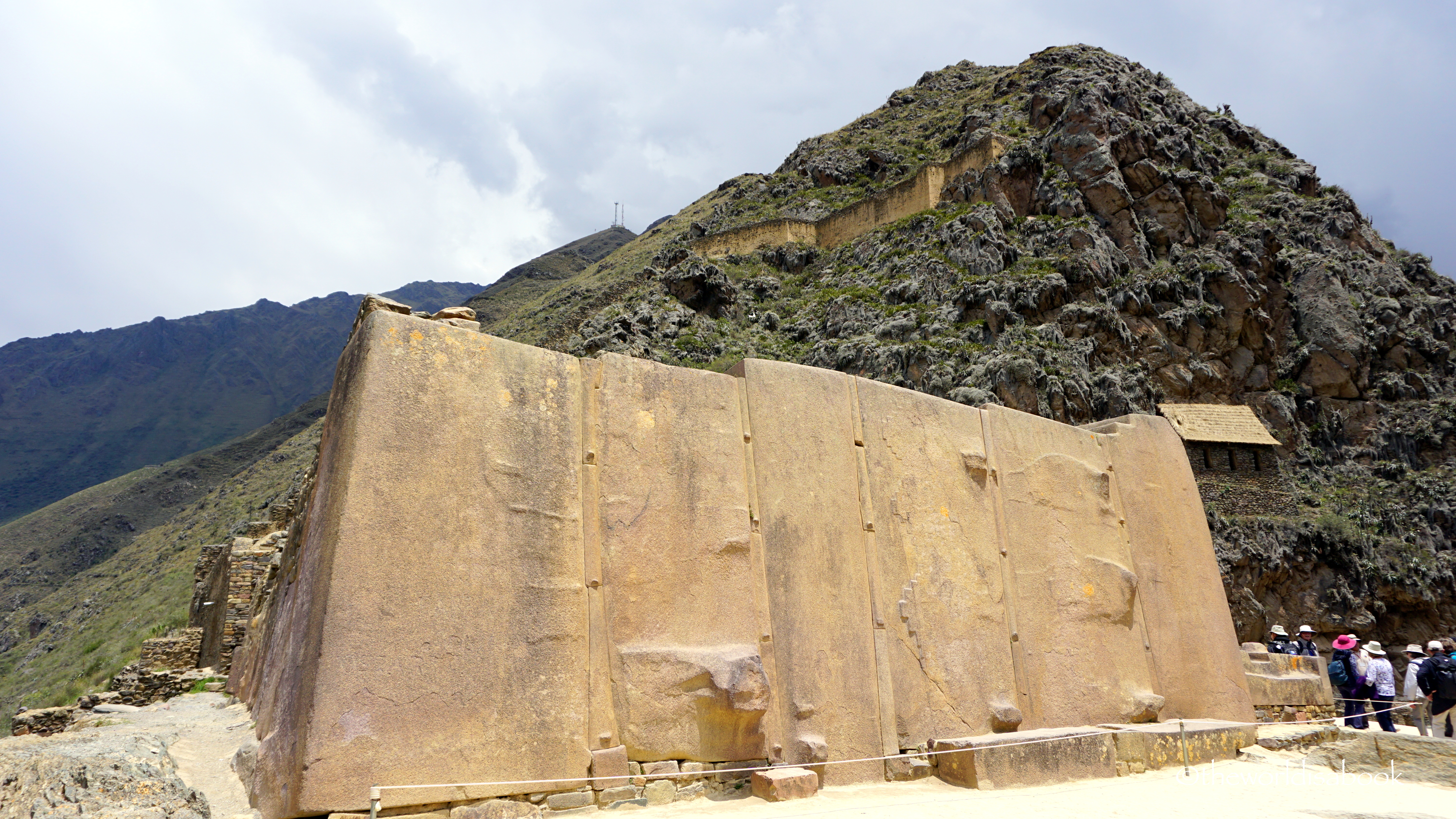
The distance between the two mountains spanned 3.7 miles (6 km). Our guide told us that it probably took hundreds of men spanning weeks to transport one stone. It was also amazing how they carved and made the pieces fit together like a jigsaw puzzle or those Lego brick toys.
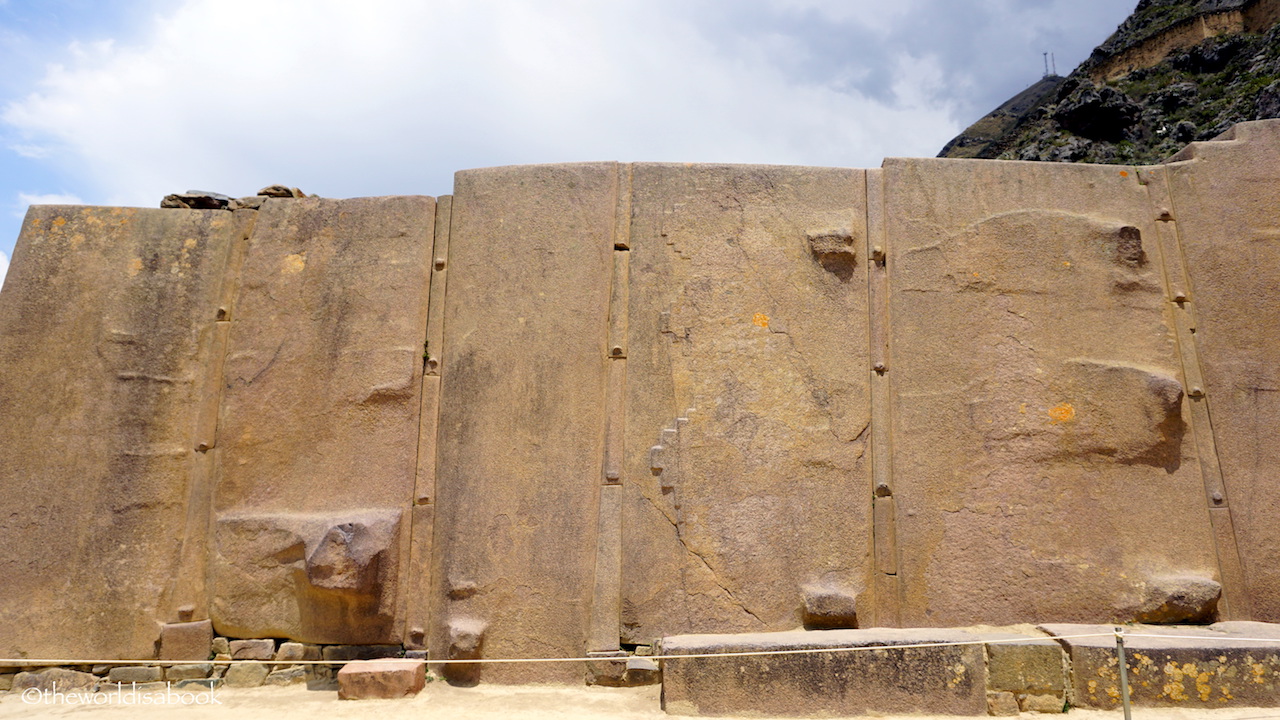
While it may have been a former fortress, there aren’t many military structures left here. Ollantaytambo was likely chosen due to its location. It was strategically placed on a mountain top in between two valleys. The fortress was built high up with guard houses to see any incoming invaders. It had large, solid walls and secured gates on steep slopes plus a maze layout below.
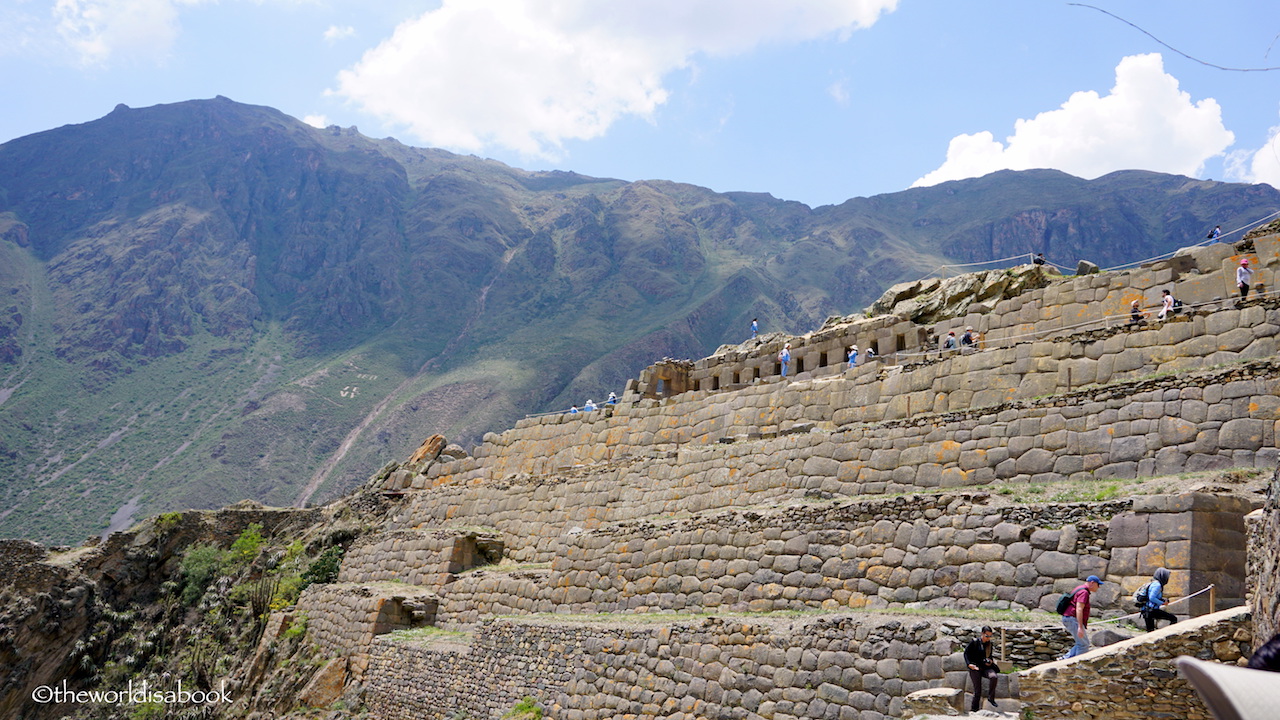
This complex was also used for agricultural purposes. Stepped agricultural terraces or andene were found throughout the area. The ones on Temple Hill were now largely used as walking paths and rest stops for the visitors. The terrace walls were also huge and made for another realization how incredible the Incas were with their construction.
Though, we found a small section that still had some plants. Most of the crops here were corn, potatoes and quinoa. Many of the terraces throughout the Sacred Valley were built on mountain sides and hills and irrigated by water coming from the mountains.
The steps and terraces ensured the crops were getting more sunlight. They were also built to control irrigation and overflow into the towns below and to increase the space for planting.
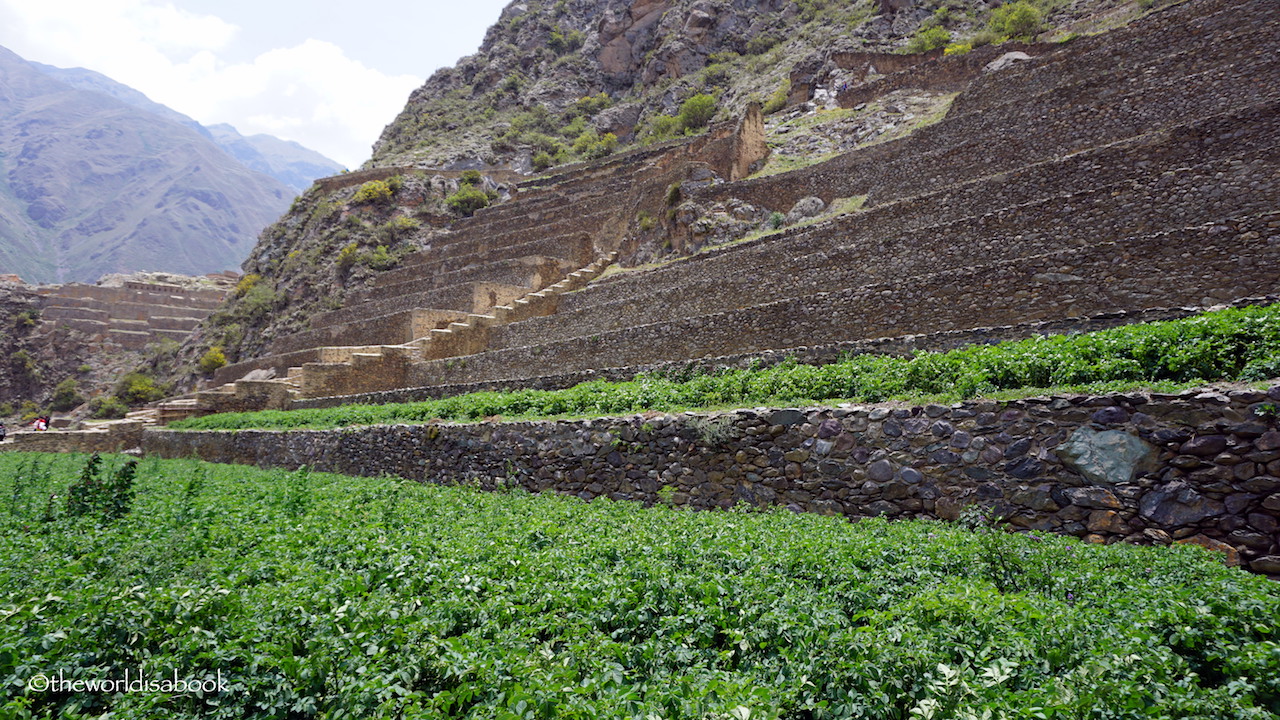
We made our way to the other end of the complex by walking through terraces and steep stairs down to the open field and more ruins. Going down was as slow a process as going up for us.
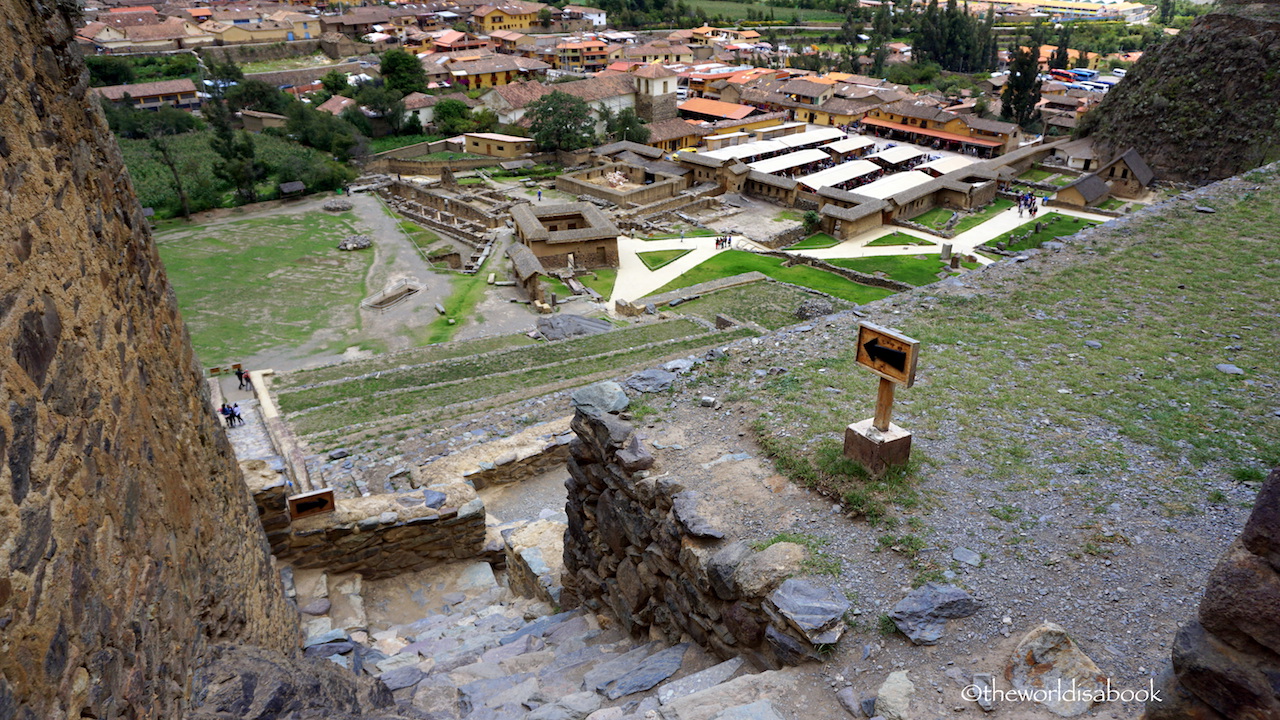
There were a few covered sitting areas here along the river. Take some time to rest, relax and enjoy the view of the fortress and ruins from here.
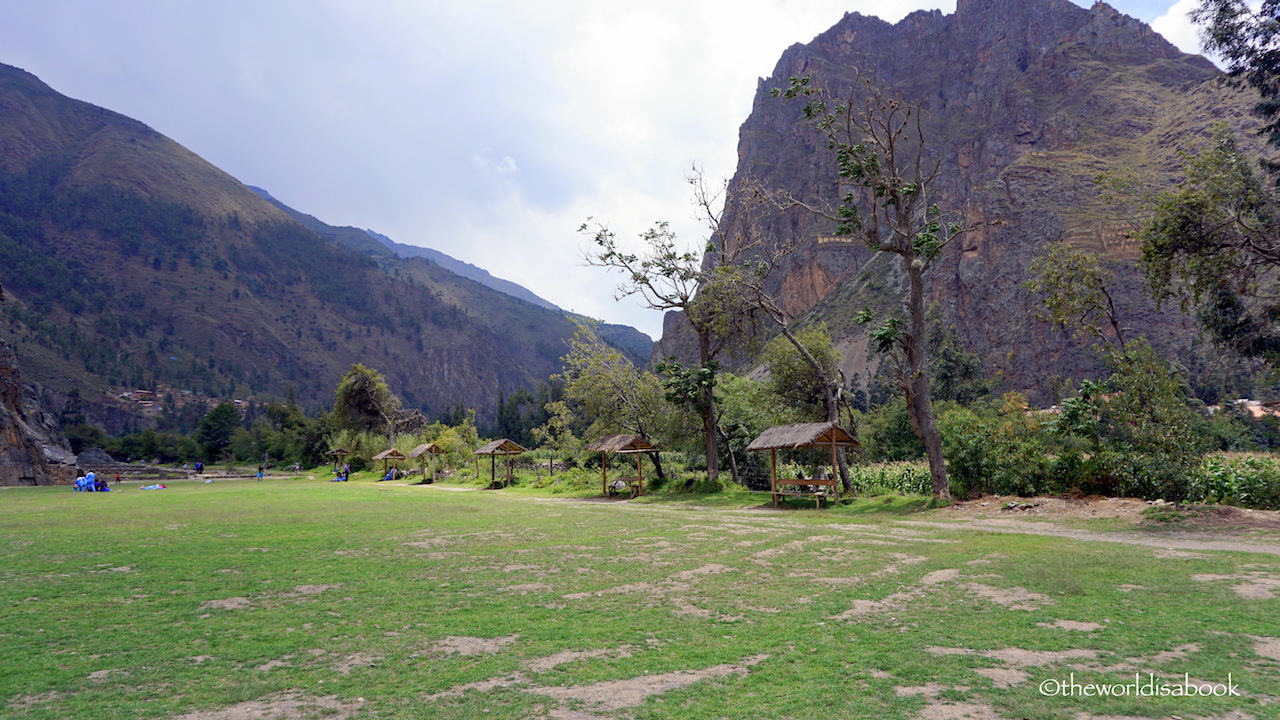
Our guide finished our tour at the ritual sector by the base of the fortress. The Patakancha river runs alongside this area that was used by the complex and the neighboring fields. This was once the water temple and it was surrounded by several fountains. There was something very calming in this area where we heard all the water flowing.
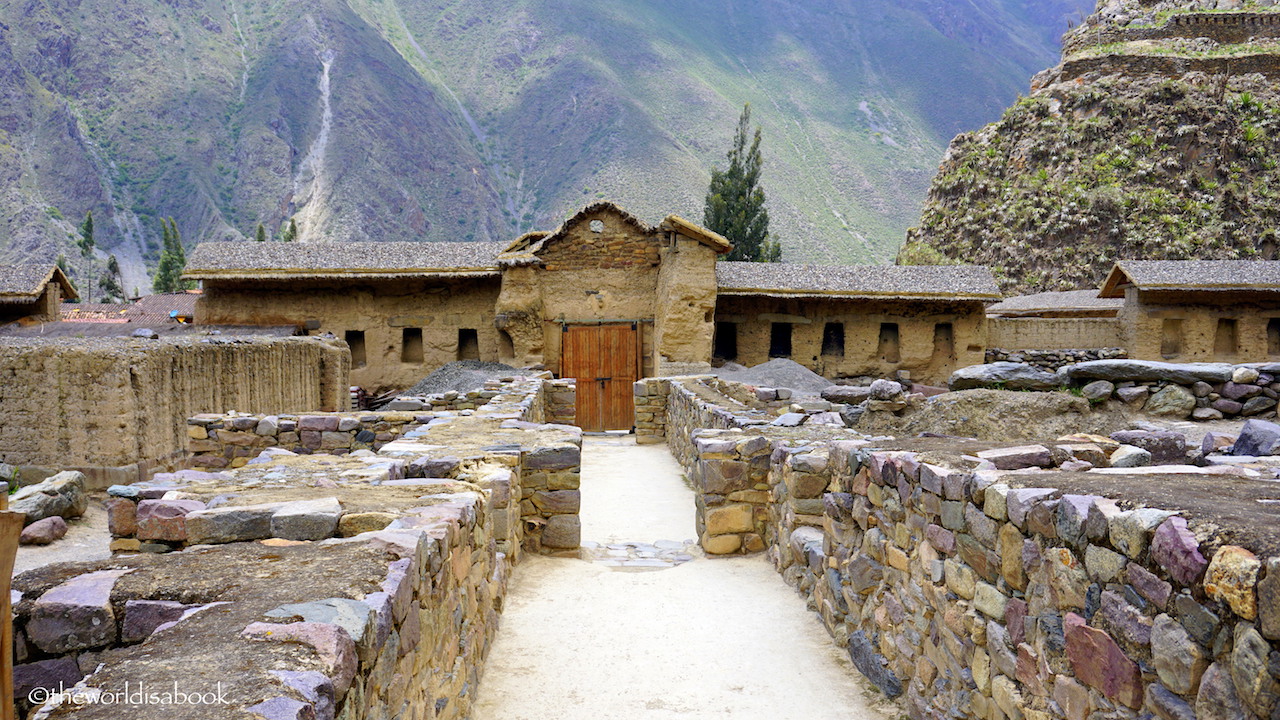
The most popular fountain was the Bath of the Princess (Baño de la ñusta). Inca ruins had the three level symbolism that we found here in the granite fountain. These were the heaven (represented by the condor), the present or living (represented by the puma) and the underworld (represented by the snake).
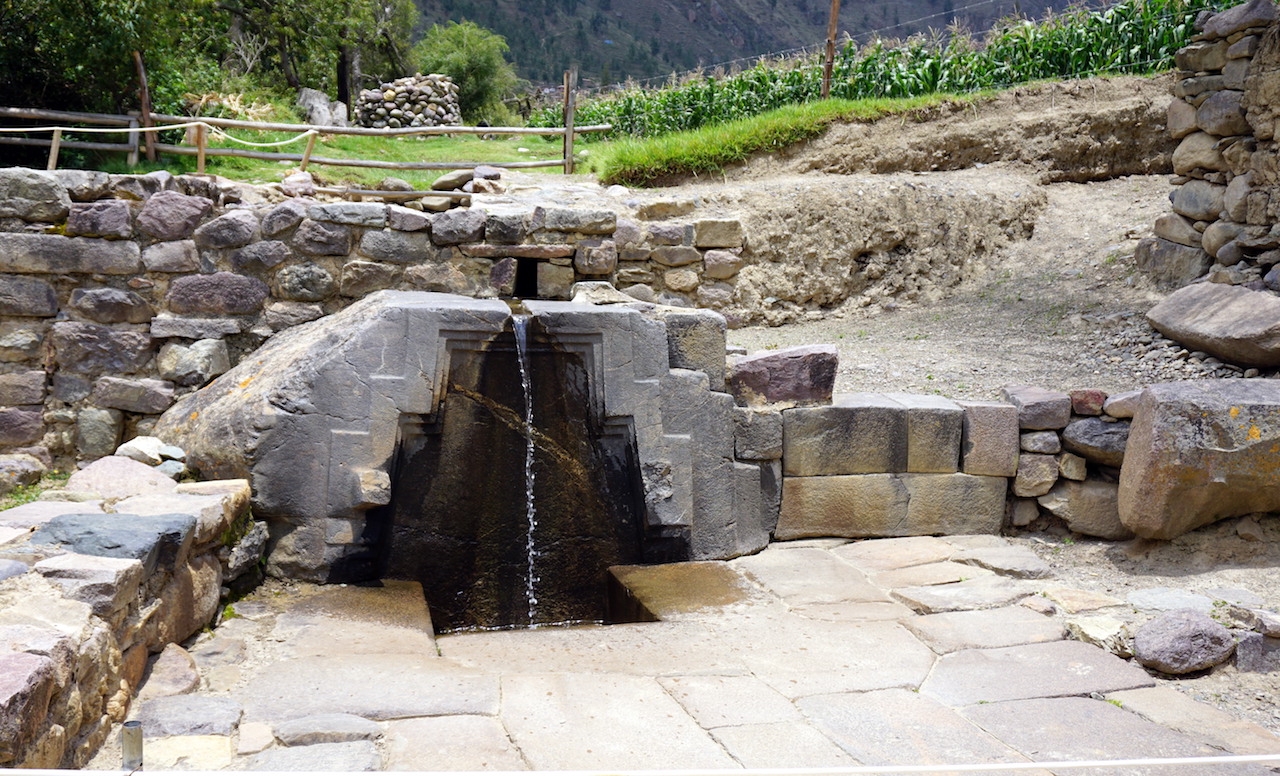
The Town and Market
We enjoyed visiting the markets around the many towns in the Sacred Valley. Ollantaytambo’ s market was the smallest that we visited. But, we found some unique items here not found elsewhere. Though, Cusco was still cheaper for most of the souvenirs. The market stalls were right outside the entrance and exit of the ruins. Don’t miss the stalls that sell fresh fruits.
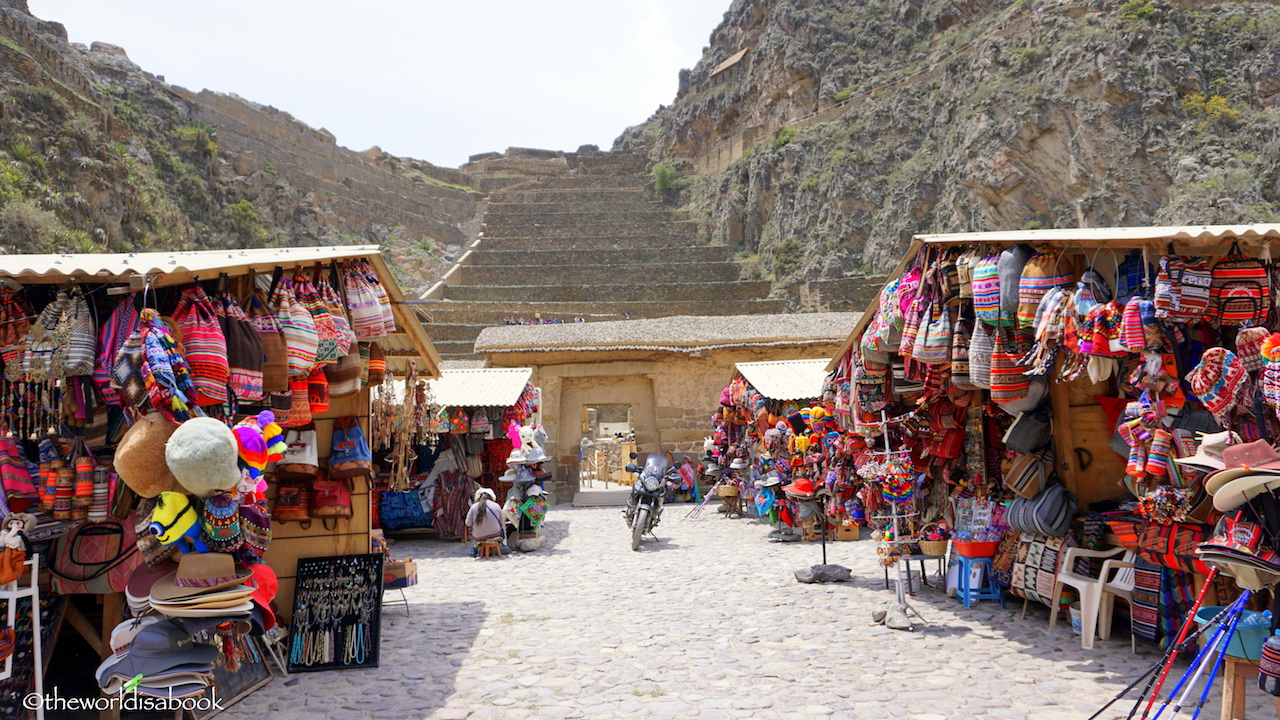
We really liked wandering around the old traditional town of Ollantaytambo. Its size was just right and we felt safe even walking at night. Much like the other Peruvian towns we visited, there was a small square in the center surrounded by shops and restaurants.
The cobblestoned streets were kept clean. We found people cleaning after the stray dogs roaming around here. Don’t worry, the dogs don’t bother the visitors at all. Adobe walls lined many of the streets.
We loved the street of our hotel where canals and water continuously flowing was a calming sound. There was no shortage of locals dressed in their colorful, native clothes walking the streets.
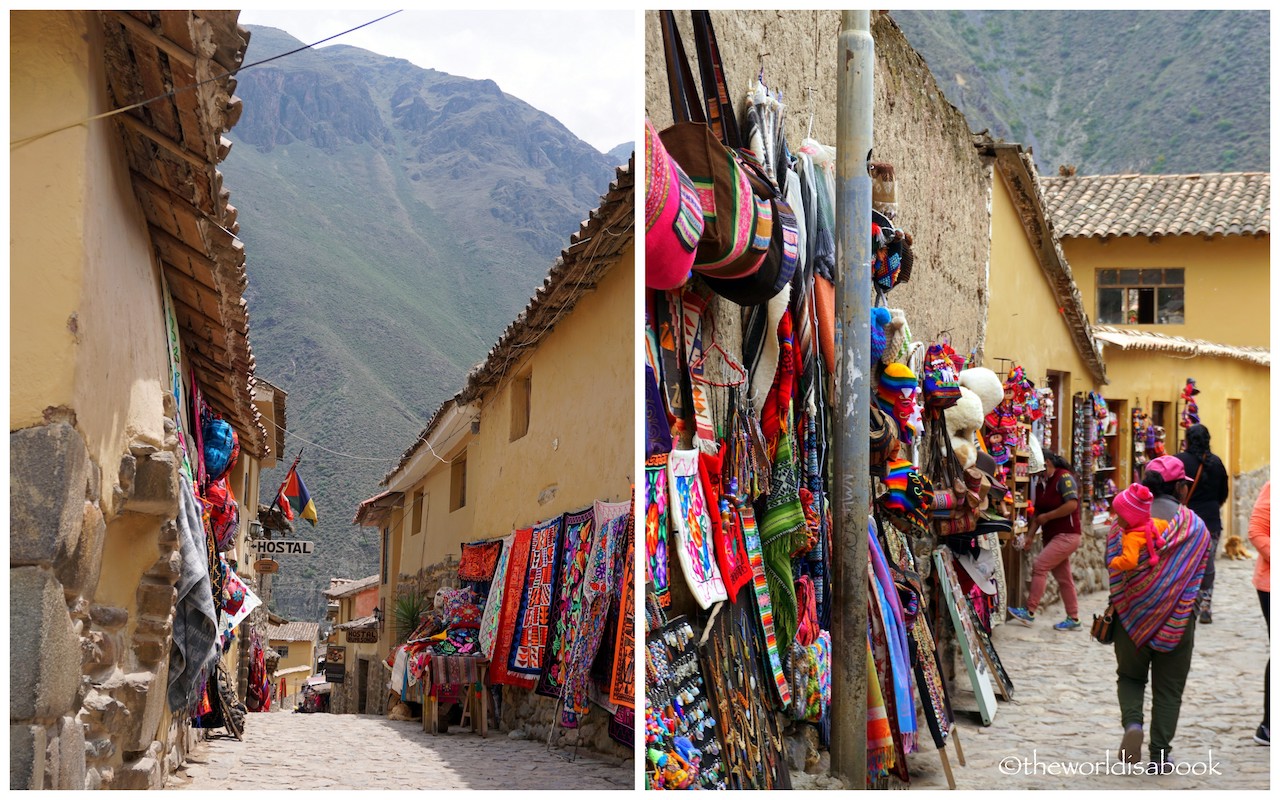
The Ollantaytambo fortress and ruins do not get as much publicity as the nearby attractions. But, this town and fortress shouldn’t be missed. While this town may be the start of the train journey to Machu Picchu and the Inca Trail, we found it charming and staying here was one of our favorite parts of our Peruvian trip. We recommend exploring Ollantaytambo on the way to fulfilling that bucket list item and making it a part of a memorable visit in Peru’s Sacred Valley.

